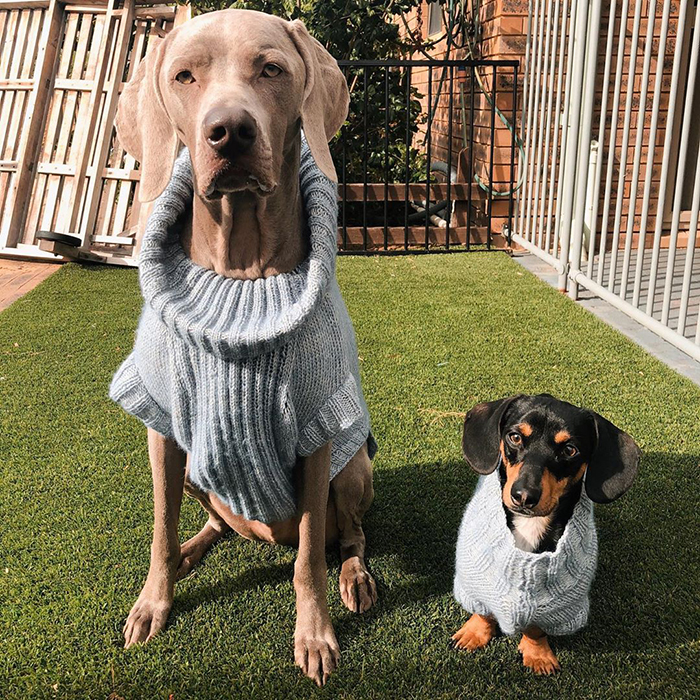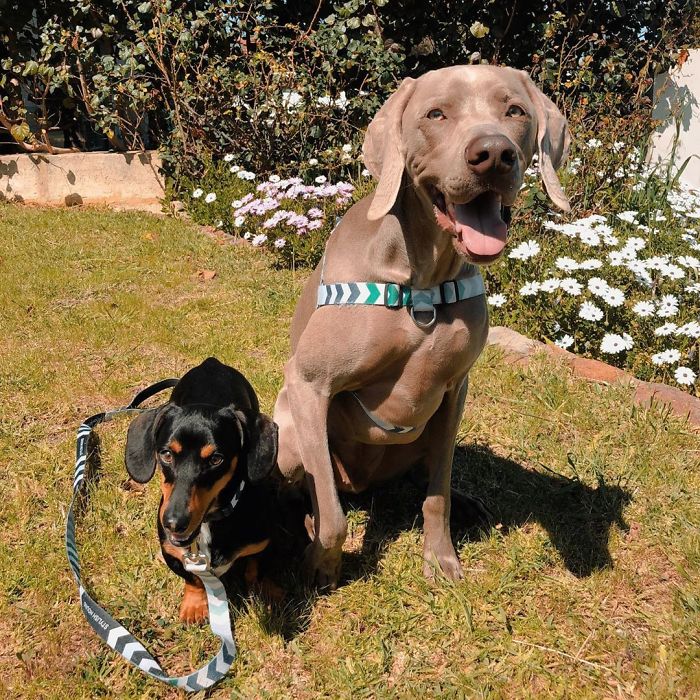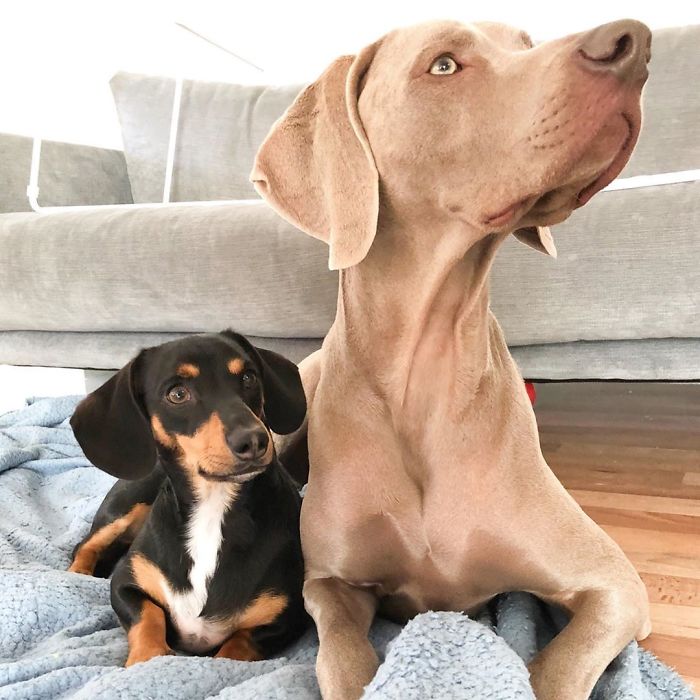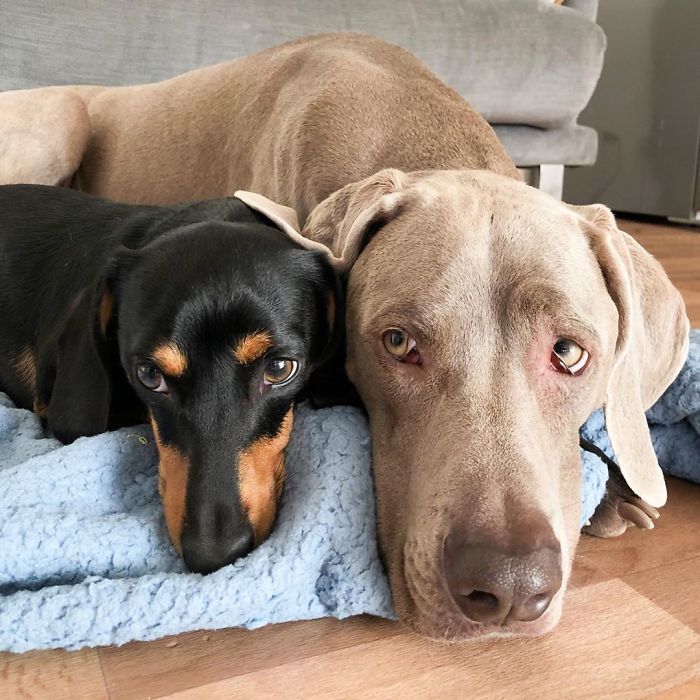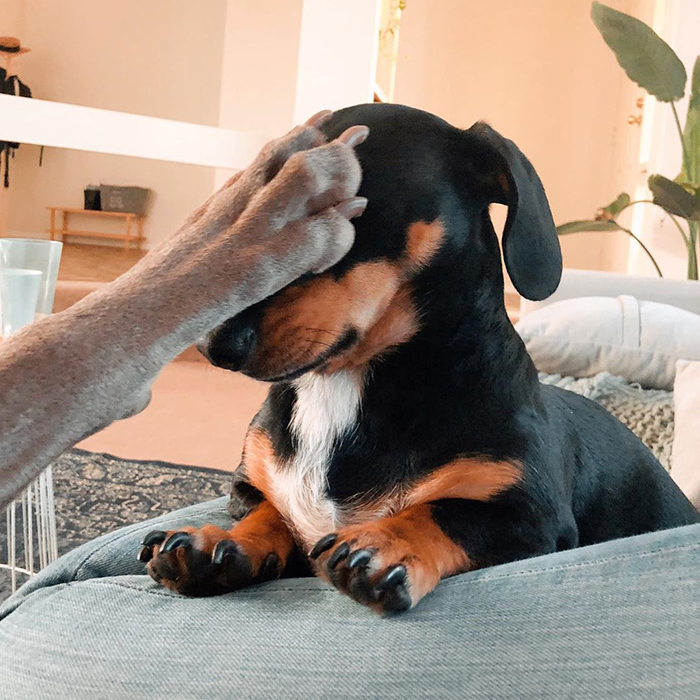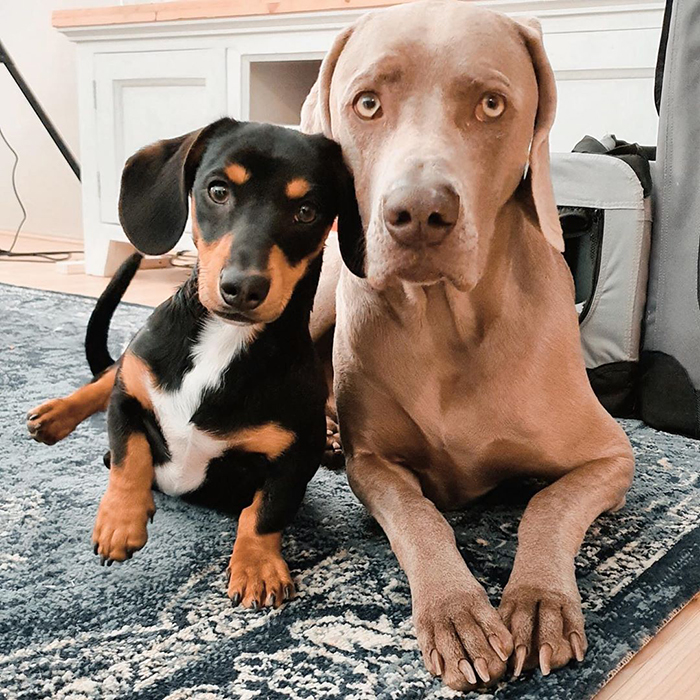We all need a friend, and this cute furball is the perfect example of how it can make your days brighter. When a 2-year-old Weimaraner named Arnold was only a puppy, he had a bad experience with a big German shepherd. Naturally, the scary encounter left a scar on Arnold’s heart. He already suffered from separation anxiety, but after the bloody run-in, he grew even more fearful, especially around big dogs.
Arnold—a 2-year-old Weimaraner—had been suffering from separation anxiety since he was a pup
Image credits: arnoldandfrank
But his owner—Carolyn Manalis, who lives in Perth, Australia—knew there had to be something she could do to make Arnold feel better. And then Frank came along—a miniature dachshund, and just about the friendliest puppy you could meet. Carolyn adopted Frank from a friend of hers and soon enough, the tiny helper took on the job of being an emotional support dog for Arnold.
On top of this, he had a scary experience with a big German shepherd
Image credits: arnoldandfrank
Which left him emotionally scarred and even more fearful than he was before
Image credits: arnoldandfrank
While emotional support dogs usually “work” for humans, Carolyn knew that such a dog would help Arnold with his anxiety. She told Caters News: “The bond these two dogs have is just insanely beautiful. They are so connected and loving and supportive of one another. If one ever cries, the other one is there in half a second to check they are OK. Their love is unconditional, regardless of their size or breed.”
But everything changed when Frank came along
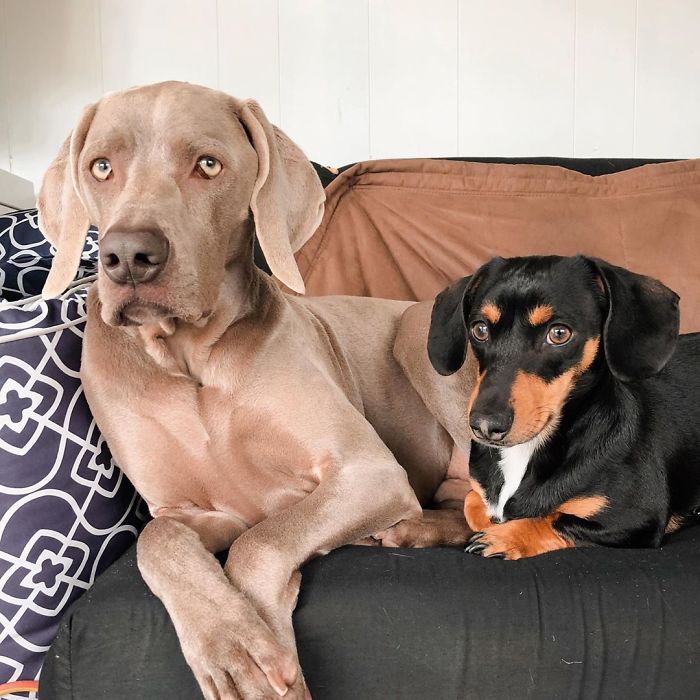
Frank is a miniature dachshund who’s super friendly and confident
Image credits: arnoldandfrank
As strange as it may sound, it’s the much tinier and younger Frank that brings reassurance to a dog who weighs 66 pounds more than him. Radiating self-assurance and friendliness, the adorable dachshund helped his big brother Arnold to finally overcome crippling anxiety.
He radiates self-assurance, which helped Arnold to tackle his anxiety
Image credits: arnoldandfrank
With each passing day, the owner of the dogs could see Arnold getting better and better
Image credits: arnoldandfrank
Carolyn told the media: “Frank has helped Arnold regain his confidence to be able to play and wrestle while learning that this doesn’t always mean he’s going to get hurt or attacked. Having a little friend to play with has been the perfect therapy for Arnold to heal.”
The tiny puppy helped Arnold to finally regain his confidence
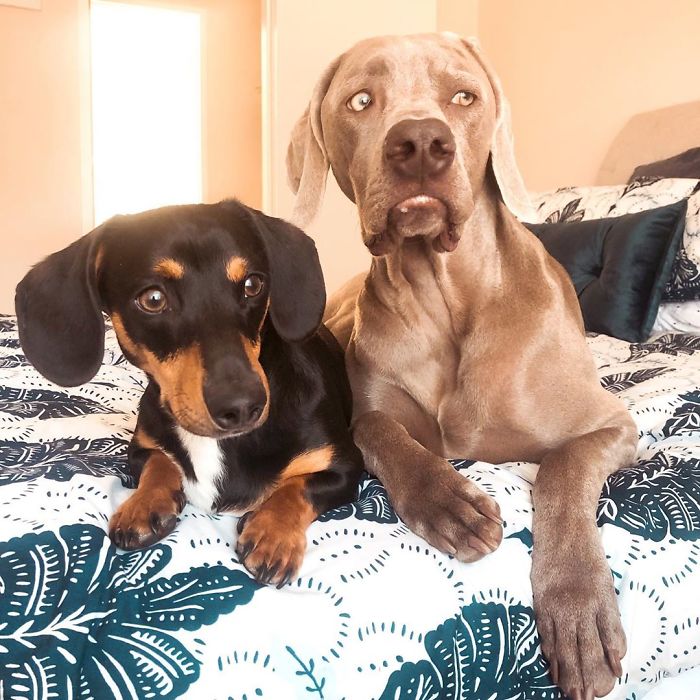
However, there are plenty of tricks that Frank learned from none other than his big brother. “We swear Frank thinks Arnold is his dad,” the owner of the dogs told the news outlet. “Being the second child, he definitely didn’t get as much training and attention as the first. Most of what he has learned, he has learned from Arnold.”
They could play wrestle together without Arnold fearing getting hurt
Image credits: arnoldandfrank
The Weimaraner has also taught Frank a thing or two
Image credits: arnoldandfrank
And what do younger brothers usually do? They copy their older siblings! “Frank copies everything Arnold does, to the point where, if Arnold barks or makes a sound, Frank will mimic it directly after, almost like a parrot!” Carolyn explained. “Arnold taught Frank how to be house trained, how to bark at intruders, how to chase a ball, how to stand and wait to have his collar and leash put on, how to sit and to wait before crossing the road,” she added. “Everywhere Arnold walks, Frank will follow.”
And the smaller pup copies everything his “older brother” does
Image credits: arnoldandfrank
“Everywhere Arnold walks, Frank will follow”





:max_bytes(150000):strip_icc():format(webp)/new-guinea-singing-dog-6c799782613844dc9aae063e43de80f5-9339f51aa1024371bb73f410d0428fc7.jpg)
